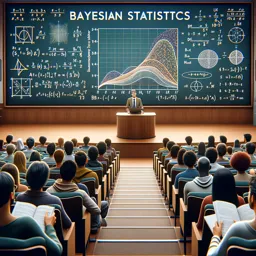Understanding Applied Statistics
Applied statistics is the use of statistical techniques to solve real-world problems by collecting, analyzing, and interpreting data. Unlike theoretical statistics, which focuses on the development of new statistical theories and mathematical proofs, applied statistics emphasizes practical applications in fields such as business, healthcare, social sciences, and engineering.
Common Steps in Applied Statistical Analysis
- Defining the Problem: Clearly outlining the questions to be answered helps in selecting the right data and analytical methods.
- Data Collection: Gathering reliable data is fundamental. This could involve surveys, experiments, or retrieving existing datasets from databases.
- Data Preparation: Cleaning and organizing the data ensures accuracy. Techniques include handling missing values, removing duplicates, and transforming variables.
- Data Analysis: Applying appropriate statistical techniques depending on the type of data and research question. This might include descriptive statistics, hypothesis testing, regression analysis, or classification.
- Interpretation: Drawing meaningful conclusions and making informed decisions based on the results.
Essential Techniques in Applied Statistics
- Descriptive Statistics: Summarizing basic features of data, such as mean, median, mode, and standard deviation.
- Inferential Statistics: Making predictions or inferences about a population based on sample data through confidence intervals and significance tests.
- Regression Analysis: Modeling relationships between variables to predict outcomes. Common models include linear and logistic regression.
- ANOVA (Analysis of Variance): Testing for differences between means in multiple groups.
- Nonparametric Methods: Analyzing data that do not follow normal distributions or when dealing with ordinal data.
Applications of Applied Statistics
Applied statistics is used widely across disciplines:
- Medicine: Evaluating treatment effectiveness and designing clinical trials.
- Business: Forecasting sales, improving quality control, and understanding consumer behavior.
- Public Policy: Analyzing social program outcomes and population trends.
- Engineering: Improving process efficiency and product reliability.
Importance of Statistical Software
With the growth of data size and complexity, statistical software tools like R, Python, SPSS, and SAS have become essential in applied statistics. They assist in data management, advanced calculations, visualization, and reporting.
Conclusion
Applied statistics enables professionals to make data-driven decisions, solve practical problems, and contribute to advancements in various fields. Mastering its techniques prepares students and practitioners to approach challenges with analytical thinking and evidence-based reasoning.

























